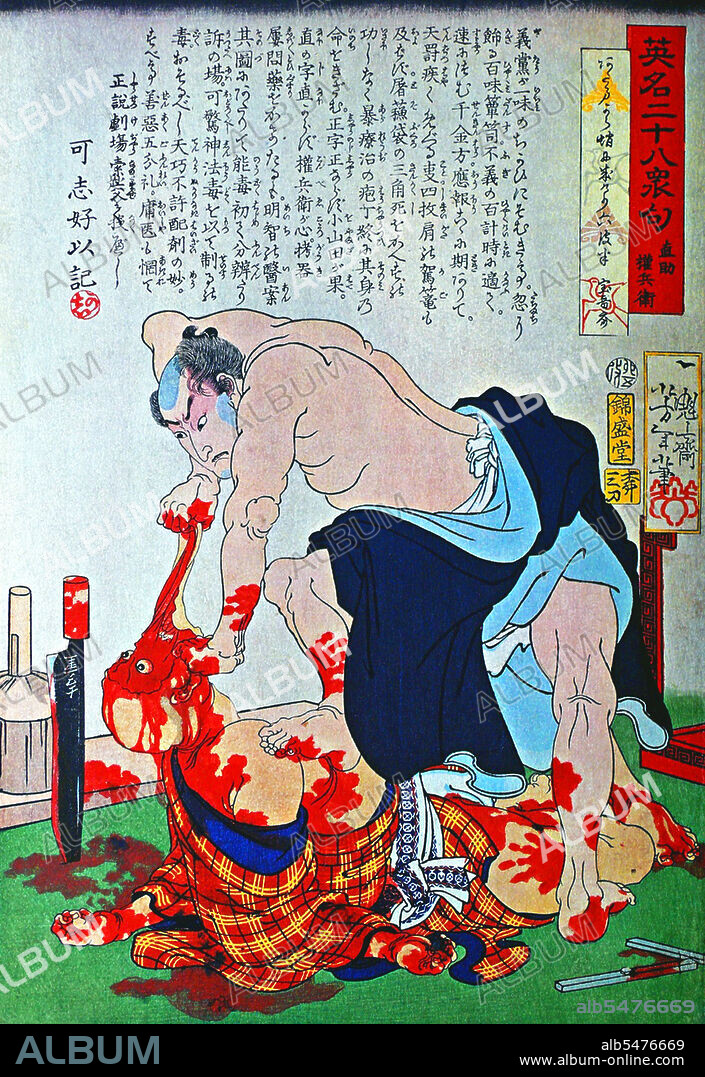alb5476669
Naosuke Gombei ripping off a face.

|
Ajouter à une autre Lightbox |
|
Ajouter à une autre Lightbox |



Avez-vous déjà un compte? S'identifier
Vous n'avez pas de compte ? S'inscrire
Acheter cette image

Titre:
Naosuke Gombei ripping off a face.
Légende:
Voir la traduction automatique
Tsukioka Yoshitoshi (30 April 1839 9 June 1892, also named Taiso Yoshitoshi) was a Japanese artist. He is widely recognized as the last great master of Ukiyo-e, a type of Japanese woodblock printing. He is additionally regarded as one of the form's greatest innovators. His career spanned two eras the last years of Edo period Japan, and the first years of modern Japan following the Meiji Restoration. Like many Japanese, Yoshitoshi was interested in new things from the rest of the world, but over time he became increasingly concerned with the loss of many aspects of traditional Japanese culture, among them traditional woodblock printing. Eimei nijuhasshuku (28 Famous Murders with Verse), also known as the 'Bloody Prints', is a collection of Japanese ukiyo-e from the 1860s, which depicted gruesome acts of murder or torture based on historical events or scenes in Kabuki plays. Although most of the works are solely violent by nature, it is perhaps the first known example of ero guro or the erotic grotesque in Japanese culture, an art sub-genre which depicts either erotic or extreme images of violence and mutilation.
Crédit:
Album / Pictures From History/Universal Images Group
Autorisations:
Modèle: Non - Propriété: Non
Questions sur les droits?
Questions sur les droits?
Taille de l'image:
3500 x 5083 px | 50.9 MB
Taille d'impression:
29.6 x 43.0 cm | 11.7 x 16.9 in (300 dpi)
Mots clés:
ARME • ARMES • ART (CATÉGORIE) • ART • ART, PEINTURE • ASIE • ASIE, CONTINENT • ATROCITÉ • CONTINENT ASIE • CRUAUTE • DÉCÈS • HORREUR • JAPON • JAPONAIS • JAPONAISE • KABUKI • MODE • MODE: MASCULINE • MORT • ORNEMENT, JAPONAIS • PEINTURE • STYLE • TABLEAU • TABLEAUX • VETEMENT: MODE • VIOLENCE
 Pinterest
Pinterest Twitter
Twitter Facebook
Facebook Copier le lien
Copier le lien Email
Email
